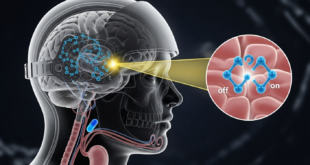Free-space optical communication (FSO) is an optical communication technology that uses light propagating in free space to wirelessly transmit data for telecommunications or computer networking. “Free space” means air, outer space, vacuum, or something similar. FSO operates on the Line-of-Sight phenomenon, consisting of a LASER at source and detector at the destination which provides optical wireless communication between them. This contrasts with using solids such as optical fiber cable.
The drawback of the FSO link is that its performance is strongly dependent on atmospheric attenuations. Different atmospheric conditions like snow, fog and rain scatter and absorb the transmitted signal, which leads to attenuation of information signal before receiving at receiver end. As a result of attenuation caused by atmospheric conditions the range and the capacity of wireless channel are degraded thereby restricting the potential of the FSO link by limiting the regions and times.
The major factor concerning the free space communication market is the instability of the network system. The laser power attenuation through the atmosphere is variable and difficult to predict where changing atmospheric conditions can affect the transmission of information. Absorption of optical beam photons by water molecules in the terrestrial atmosphere reduces the power density of optical beams directly affecting the information transmission. Dynamic wind loads, thermal expansions, and weak earthquakes result in vibrations of the transmitter beam leading to a misalignment between transmitters and receivers. In addition, the fundamental limitation of the free space optics communication market arises from the atmosphere it propagates and can be severely affected by atmospheric turbulence and fog.
FSO link distances can vary greatly from desert areas like Las Vegas to heavy-fog cities like St. Johns NF. Another factor in determining FSO distance limitations is the link availability expectation of the application. For enterprise applications, link availability requirements are generally greater than 99%. This allows for longer FSO link ranges, based on the availability curves. The enterprise market is where the majority of FSO systems have been deployed. The carriers and ISPs are another potential large user of FSO systems, especially for last-mile metro access applications. If FSO systems are to be used in telecommunication applications, they will need to meet much higher availability requirements. Carrier-class availability is generally considered to be 99.999% (5 nines).
Hybrid Free Space Optics (FSO)/Radio Frequency (RF) communication systems have emerged as a way to improve network performance by providing enhanced availability and reliability. In an effort to mitigate individual drawbacks in the optical link during adverse weather conditions, network traffic flows simultaneously between channels.
Isaac I. Kim, Eric J. Korevaar have analyzed link budgets and visibility-limiting weather conditions and found that to meet carrier-class availability, FSO links should normally be less than 140m (there are cities like Phoenix and Las Vegas where this 99.999% distance limitation increases significantly). This calculation is based on a 53 dB link budget. This concept is extended to the best possible FSO system, which would have a 10 W transmitter and a photocounting detector with a sensitivity of 1 nW. This FSO system would have a 100 dB link margin, which would only increase the 99.999% link distance to 286 m. A more practical solution to extending the high availability range would be to back up the FSO link with a lower data rate radio frequency (RF) link. This hybrid FSO/RF system would extend the 99.999% link range to longer distances and open up a much larger metro/access market to the carriers.
DARPA’s Free space Optical Experimental Network Experiment (FOENEX) Program
Free-space optical communications (FSOC) links provide an appealing and complementary enhancement to current radio frequency (RF) systems because of their inherent benefits of high-bandwidth and directional communication. Although FSOC systems can be inoperable through clouds or thick fog, employing them in a hybrid RF/optical link configuration can yield a system that can operate under most weather conditions and provide high-bandwidth, secure, jam-resistant communications under most conditions.
DARPA’s Free space Optical Experimental Network Experiment (FOENEX) Program is a continuation of the earlier Optical RF Communications Adjunct (ORCA) Program that was designed to bring high data rate networking to the warfighter via airborne platforms. A FOENEX network contains multiple air and ground platforms, each containing one or more hybrid terminals and interconnected by simultaneous hybrid FSO/RF links. Beyond attenuation effects and line-of-sight limitations, FSOC link performance is primarily driven by optical turbulence along the beam path, which leads to severe fluctuation of the communications channel and distortion of the signal wavefront.
Beyond attenuation effects and line-of-sight limitations, FSOC link performance is primarily driven by optical turbulence along the beam path, which leads to severe fluctuation of the communications channel and distortion of the signal wavefront. Many methods have been either modeled or field-tested to reduce this fading with varying degrees of success. The approach taken in the DARPA Free Space Optical Experimental Network Experiment (FOENEX) program is a continuance of systems development work funded and developed by DARPA, the Air Force Research Laboratory (AFRL), and the Naval Research Laboratories (NRL). The use of QoS-based link-level techniques was successfully demonstrated under the AFRL Iron T2 and DARPA ORCA programs. The FOENEX program extends these methods via technology developments at the physical layer as well as implementing the network methods to ensure end-to-end high bandwidth connectivity.
The Free Space Optical Experimental Network Experiment (FOENEX) program is improving the technologies to establish reliable hybrid RF/FSO communications to the level that engineering and manufacturing development can occur
References and Resources also include:
 International Defense Security & Technology Your trusted Source for News, Research and Analysis
International Defense Security & Technology Your trusted Source for News, Research and Analysis
